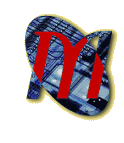


|

|
|
ART AND NEW TECHNOLOGIES IN MONTREAL ON THE OCCASION OF THE OPENING OF TECHNOBORO  Parallel to the ongoing development of new technologies, artists increasingly incorporate them into their practice. As one encounters more and more artworks created with new technologies, one often asks oneself the questions: where and how were these works produced? Many operations can be implemented on a home computer, but the fact that others cannot opens a gap between university labs and the industry. For this reason, the necessity for new structures supporting this stratum of innovative artistic production and its distribution emerges. Cultural organizations are gradually integrating the art of new technologies into their activities.
At this stage, Techonoboro has limited funds but the plans and the efforts for its expansion are in the forefront. Six to eight projects per year are accepted. One of the unique aspects of the lab is that it is open to the public at affordable rates. In addition to the artists’ residencies, Technoboro offers satellite activities which focus on new media such as, talks, conferences, workshops, as well as discussion groups, held both in physical and virtual space. Artists whose production is based on new technologies are invited to present their work and reveal the mysteries of their creative process. Technoboro will soon be part of Oboro’s Web site which will periodically announce the activities at the centre and above all, the projects produced at the lab. Furthermore, on occasion, the Technoboro section of the site will present them in Web versions.
There are signs of change in La Cité des arts et des nouvelles technologies de Montréal, founded in 1985 by Ginette Major and Hervé Fischer. Focusing on art and new technologies, Images du Futur, an international exhibition held every Summer since 1986, is now replaced by Cyberworld. Presenting artists from all over the world who work with new technologies, the event remains the same in its concept, while the change of its title is indicative of an industry undergoing rapid transformations. As the new title suggests, today we are living in a world which only last year was a view of the future. In 1995, La Cité des arts et des nouvelles technologies de Montréal opened Le Café ElectroniqueTM, which was the first one of its kind, equipped with 40 computers, where visitors can explore the Internet and a large collection of CD-Roms. The activities at La Cité des arts et des nouvelles technologies de Montréal are oriented toward the general public and above all toward children to whom workshops and special guided tours are offered which familiarize them with the potential of new technologies. Cyberworld provides trainning to elementary, high school students and teachers. On the verge of the opening of the mega cinema and new media complex the scene of art and new technologies in Montreal is expanding. The 3e Manifestation Internationale Vdéo et Art Electronique, Champ Libre, which was held last Autumn at Foufounes Electriques opened for the first time a multimedia section, Salon média, which contained a CD-Rom program, as well as an Internet Program presenting Web site with artistic content. Although, the coordinator of the event François Cormier says that the Salon was more of an experiment, his impression was that it was very well received and that fitted naturally into the general program. He is now certain that the Salon will be presented at the next Manifestation. Furthermore, the Montreal International Festival of New Cinema and Video is now renamed Montreal International Festival of Cinema and New Media. The 1997 edition of this event designed a distinct space for new media on Saint Laurent (close to Cinéma Parallel) called Media Lounge. There was no trace of lack of interest; the place was always full of curious visitors, mostly a young audience. The Web projects presented at the 1997 edition of the festival are available on line. As it seems, cultural organizations are making room for new media for they are not only adapting to this new reality but embracing it, participating in it and building it. Montreal’s scene of art and new technologies offers a variety of opportunities for both artists and the public to approach new means of expression and communication. It manifests itself as a solid foundation for further development. In this context, the opening of Technoboro is not an isolated event and developments in this direction are part of a large stream distinguishing itself with a diversity of initiatives which complement each other. Instead of being the domaine of a technology-crazed minority, new technologies, no longer a god nor a demon, have become accessible to everybody and given new tools to artists which can enrich the language of art. While technology itself cannot perform wonders, more and more artists are beginning to master its use. When they exploit it as a tool, which becomes transparent, artists can broaden the possibilities of their expression and invest new technologies with human values. Rossitza Daskalova
|